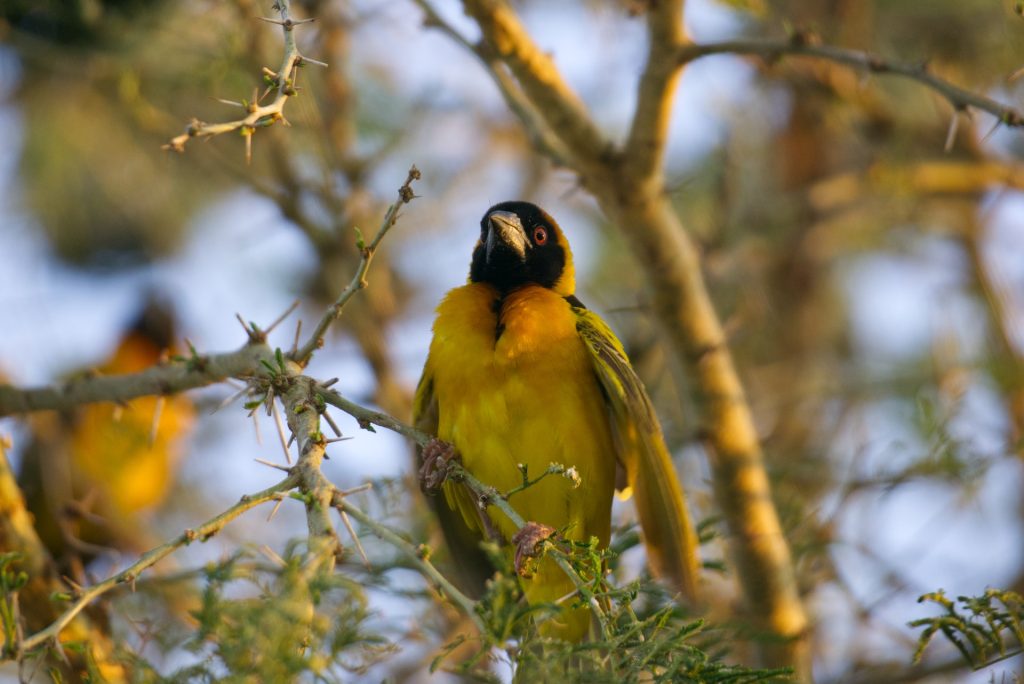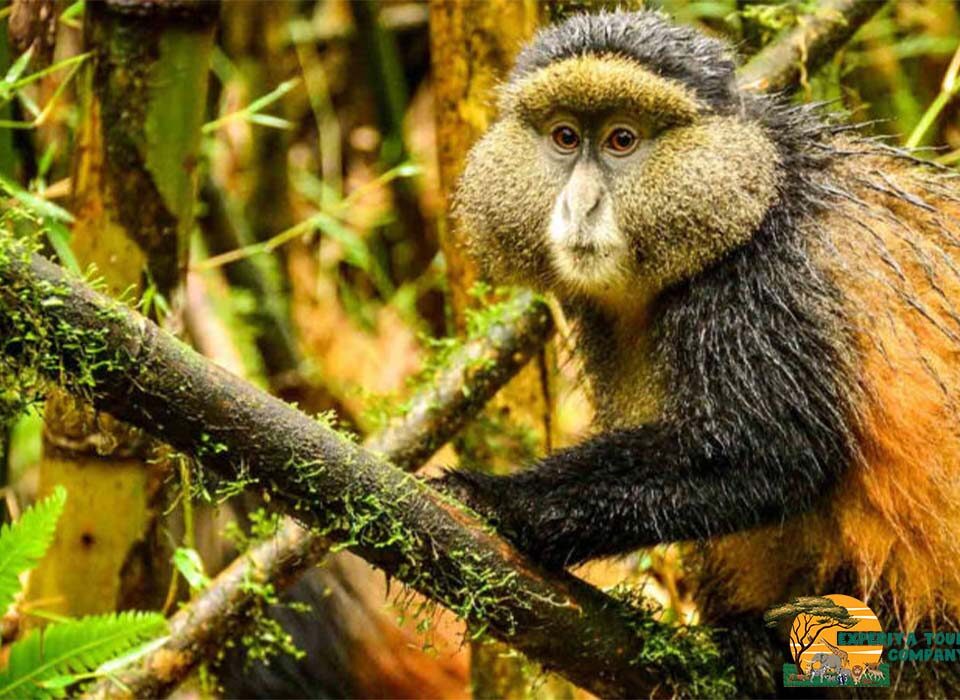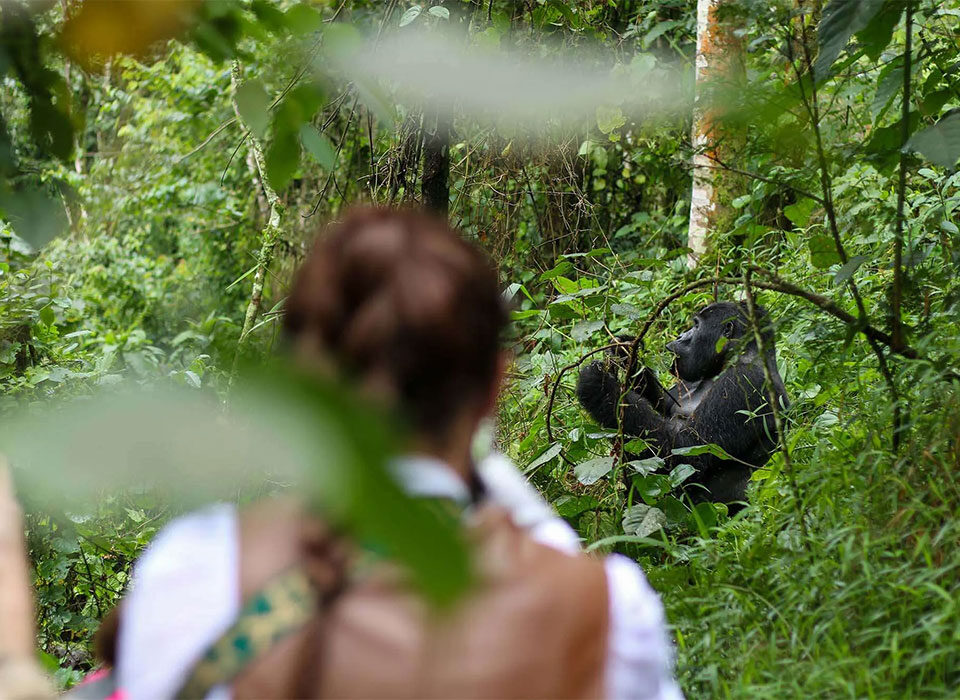
How to Get to Kibale Forest National Park – Routes, Flights & Travel Tips
October 25, 2025
How Many Chimpanzees Are in Uganda – Population, Habitats & Conservation
October 25, 2025What Wildlife Lives Alongside Chimpanzees – Discover Kibale’s Rich Biodiversity

What Wildlife Lives Alongside Chimpanzees?
Deep within Africa’s tropical rainforests, the symphony of life unfolds with every dawn. Sunlight filters through ancient canopies, birds sing from hidden perches, and rustling leaves reveal flashes of movement—sometimes a troop of red colobus monkeys, sometimes a shy duiker, and often the unmistakable call of chimpanzees echoing across the forest. These intelligent primates may be the main attraction for travelers visiting Uganda’s Kibale Forest National Park or Tanzania’s Mahale Mountains, but they are far from alone. The chimpanzee’s world is a rich and intricate ecosystem teeming with wildlife of all shapes and sizes, each playing a role in the rhythm of the forest.
In this blog, we’ll journey through the habitats where chimpanzees thrive and uncover the fascinating animals that share their home—from elusive forest elephants and vibrant birds to secretive nocturnal creatures and ancient reptiles. Understanding this biodiversity makes every chimpanzee trekking experience even more rewarding, revealing the hidden web of life that sustains these magnificent primates.
The Rich Ecosystem of Chimpanzee Habitats
Chimpanzees inhabit a wide range of environments across Africa—from dense equatorial rainforests to open woodlands and savanna mosaics. In Uganda, the most famous home of wild chimpanzees is Kibale Forest National Park, often called the “Primate Capital of the World.” This protected forest harbors over 13 different primate species, along with hundreds of birds, mammals, and reptiles.
Other significant chimpanzee habitats include Budongo Forest near Murchison Falls National Park, Kyambura Gorge in Queen Elizabeth National Park, and Semuliki National Park near the Congo border. Across the continent, you’ll also find thriving populations in Tanzania’s Gombe Stream and Mahale Mountains, and parts of Rwanda, DRC, and Cameroon.
These habitats are not just chimpanzee strongholds—they’re living museums of biodiversity. The thick vegetation, abundance of fruiting trees, and natural water sources create a perfect ecosystem for countless species that live in harmony, sometimes in competition, with the chimps.
Primates: The Closest Companions of Chimpanzees
While chimpanzees are undoubtedly the stars of the show, they share their forests with several other primate species. In Kibale Forest, for example, travelers can encounter a dazzling array of monkeys, each with distinct behavior, diet, and calls.

The Red Colobus Monkey is perhaps the most famous companion. This endangered species often lives in close proximity to chimpanzees, though not always peacefully. In fact, Kibale’s chimpanzees are among the few known to hunt and eat red colobus monkeys. Observing this dramatic interaction offers deep insight into chimpanzee intelligence, cooperation, and hunting strategy.
The Black-and-White Colobus Monkey adds visual elegance to the forest canopy. With its flowing white mantle and long tail, it moves gracefully among the treetops, feeding on leaves and fruit.
The Grey-Cheeked Mangabey is another fascinating neighbor—gregarious, noisy, and always on the move, often heard before it’s seen.
The L’Hoest’s Monkey, with its white beard and shy nature, stays closer to the forest floor, while Blue Monkeys, Red-Tailed Monkeys, and Olive Baboons add to the primate diversity that defines places like Kibale and Budongo.
For primate lovers, trekking in these forests is a real-life encyclopedia of evolution—each species revealing a different adaptation to forest life, yet all connected through shared ancestry and ecological roles.
Elephants, Buffalos, and Antelopes: The Giants of the Forest
Beyond the treetops, the forest floor of chimpanzee habitats holds its own secrets. In the deeper corners of Kibale or Semuliki, you may encounter forest elephants, smaller and darker than their savanna relatives, but equally majestic. They move silently through the trees, feeding on fallen fruit and clearing pathways that other animals, including chimpanzees, later use.
African forest buffaloes also roam these woodlands. Stockier and more secretive than the open-plains buffaloes of the Serengeti, they often graze in swampy areas or forest glades known as “clearings.”
Then there are the smaller forest antelopes such as duikers—nimble creatures that dart across trails and undergrowth. The blue duiker and red duiker are common sightings during nature walks, often spotted near fruiting trees where chimpanzees have recently fed.
These large mammals, though less frequently seen than primates, play a crucial ecological role. They help disperse seeds, recycle nutrients, and maintain balance in the ecosystem that chimpanzees depend upon.
Birds: The Music of the Forest

No forest home of chimpanzees would be complete without its spectacular birdlife. Kibale Forest alone boasts over 375 bird species, making it one of the richest birding destinations in Africa. While tracking chimpanzees, it’s common to hear a constant melody of calls—each belonging to a feathered resident of the canopy.
Among the highlights are the African grey parrot, renowned for its intelligence and mimicry; the great blue turaco, whose vibrant plumage adds flashes of color amid the greenery; and the yellow-billed barbet, whose rhythmic tapping echoes like forest percussion.
Birders will also delight in spotting the black bee-eater, blue-breasted kingfisher, crowned eagle, and Narina trogon. These species coexist harmoniously with the chimpanzees, thriving on insects and fruits that abound in the forest. The presence of so many birds is a direct indicator of the forest’s health—a sign that the ecosystem supporting chimpanzees is thriving and intact.
Reptiles and Amphibians: The Silent Forest Dwellers
Although they often go unnoticed, reptiles and amphibians form another vital layer of life within chimpanzee territories. In the humid undergrowth and near forest streams, one can encounter chameleons, geckos, tree snakes, and frogs of remarkable variety.
The African rock python is the largest predator of this group, while smaller tree snakes and green mambas glide through branches in search of prey. These reptiles help control rodent populations and maintain balance in the food chain.
Amphibians such as reed frogs, tree frogs, and toads thrive in Kibale’s wetlands and crater lakes. Their chorus after a rainstorm adds to the orchestra of natural sounds that define the chimpanzees’ home.
Insects and Butterflies: The Forest’s Unsung Heroes
The forest that shelters chimpanzees would not exist without its tiniest inhabitants—the insects. From colorful butterflies fluttering across sunlit clearings to industrious termites building elaborate mounds, insects sustain the forest’s life cycles.
Kibale alone is home to hundreds of butterfly species, including striking swallowtails and forest emperors. Termites recycle dead wood and leaves into nutrients, while bees and other pollinators help fruiting trees regenerate—providing the fruits chimpanzees love to eat.
Even the less-loved insects like ants and beetles play crucial roles, breaking down organic matter and enriching the soil. Each one contributes silently to the life support system that sustains chimpanzees and countless other creatures.
The Predators: Hidden Hunters of the Forest
Though rarely seen, predators stalk the same forests where chimpanzees live. Leopards are the top predators here, elusive and mostly nocturnal. They sometimes prey on young monkeys, duikers, or small mammals, though encounters are extremely rare due to their secretive nature.
Serval cats, African civets, and genets also inhabit these forests, prowling through the night in search of rodents and birds.
Interestingly, chimpanzees themselves are both hunters and competitors. Groups of males coordinate hunting expeditions, often targeting red colobus monkeys, demonstrating their intelligence, communication, and teamwork. These behaviors show how chimpanzees occupy a unique niche at the top of their ecological pyramid.
People and Chimpanzees: A Delicate Coexistence
In regions surrounding national parks and reserves, humans also share the landscape with chimpanzees. Communities near Kibale, for instance, live along the park’s boundaries, growing crops like bananas, maize, and cassava.
While the relationship between humans and chimpanzees can sometimes be tense due to crop raiding, ongoing conservation programs and eco-tourism initiatives are bridging the gap. Many community members now work as guides, rangers, or lodge staff, turning coexistence into opportunity.
By supporting sustainable tourism, travelers directly help protect both chimpanzees and the vast array of wildlife that lives beside them. Each permit purchased for chimpanzee trekking contributes to conservation, community development, and environmental education.
The Web of Life: Why Biodiversity Matters
Every animal that lives alongside chimpanzees—from the tiniest insect to the towering elephant—plays an essential part in the forest’s survival. The fruit trees that feed chimpanzees depend on bats and birds for seed dispersal. The soil’s richness comes from insects and decomposers. The forest canopy, in turn, shelters smaller mammals and provides shade that regulates the entire ecosystem.
This interconnected web of life reminds us that protecting chimpanzees means protecting everything else that calls the forest home. It’s not just about one species—it’s about an entire living network that defines Africa’s wild heart.
Experience the Magic with Experiya Tour Company
Exploring the wild realm of chimpanzees and their neighbors is one of the most unforgettable experiences Africa offers. To truly immerse yourself in this world, it’s best to travel with a trusted local operator who understands the terrain, wildlife, and conservation efforts deeply.
Experiya Tour Company is a leading specialist in primate safaris and nature expeditions across East Africa. Their expert guides take travelers beyond the ordinary chimpanzee trek—offering rich insights into the flora, fauna, and cultural stories that shape each forest. With personalized itineraries, comfortable transport, and carefully chosen lodges, Experiya ensures every journey is seamless and filled with authentic encounters.
Whether you dream of tracking chimpanzees in Kibale, birding through Bigodi Wetland, or combining your adventure with gorilla trekking in Bwindi, Experiya Tour Company will craft a journey that connects you deeply with Africa’s living wilderness.



